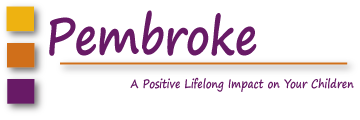We are quickly moving through the month of January, and are having a great time. We introduced small group learning in the classroom over the last few weeks; we do small groups for about ten or fifteen minutes each day. Small group is a great way for us to work together in a smaller setting and focus on skills that are important to your child’s development. Activities during small group time may include playing games, which focuses on important social skills, such as turn taking, working together with peers, and good sportsmanship. Other activities during small group also focus on building and strengthening fine motor skills, using activities such as cutting, gluing, drawing, or playing with play-dough. We have also found that small group time is a great way to encourage those who are hesitant about doing art projects to take the time and explore the art projects available to them on a daily basis. Small group has also been a great way to introduce pre-reading and reading to those who show an interest or readiness for it. We have found that small group is very beneficial to many areas of child development, providing a wonderful opportunity to individualize activities for each and every child
During January, we focused on a two-week unit studying transportation. Everyone enjoyed participating in the activities and sharing a wealth of information with their peers! Transportation is a fun topic to talk about because each child already has a basic knowledge of types of transportation that they encounter on a daily basis, and it is a topic familiar to each child. We talked about safety; wear your seatbelt when you ride in a car, wear your helmet when you ride a bike, etc. This helps the children relate to what they already are familiar with. We also talked about road signs and what they stand for or where we might see them out on the road. Seeing pictures and talking about familiar signs encouraged pre-reading and reading skills for the children using familiar environmental print.
During our transportation unit, the children had the opportunity to create number books. The children wrote numbers on each page of their book, and then put the corresponding number of stamps on each page. This particular activity focused on important beginning math skills, such as rote counting, one to one correspondence, number recognition, and number writing. Not only were these books a great math activity, but also gave the children something to take home to share with family that they made themselves. By making their own books, the child is given ownership of the work they have done. It is also a way to encourage reading; and have children become familiar with left to right and top to bottom reading.
Our children also look forward to Science experiments. Experiments provide time to explore and ask “why?” or “how?” During this unit, we discussed boats and how and why they float on water. We did a number of experiments with water and a variety of objects from around the classroom. We created a prediction chart to guess whether an object would sink or float. Creating classroom charts and graphs is a wonderful way to practice sounding out words (reading) and writing the sounds they hear to create the words. The children enjoyed talking as a group and predicting what would happen when the object was put in the water. After we completed the experiment, we counted up how many items sank or floated and graphed each result. We then counted to determine which column had more and which had fewer, thereby encouraging mathematical concepts of greater than and less than.

Leave A Comment